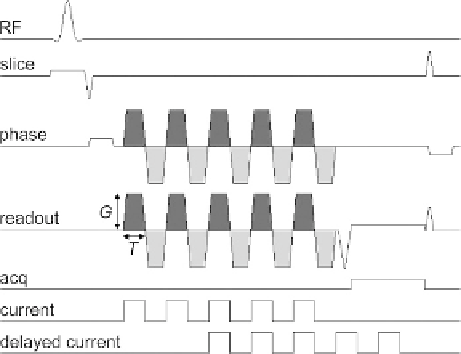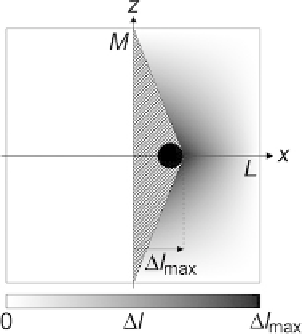Biomedical Engineering Reference
In-Depth Information
Fig. 14.1. Pulse sequence diagram for the phantom experiments. Gradient echo
sequence with n (in this example, 5) cycles of oscillating magnetic field gradients (with
positive and negative lobes of amplitude Gand duration T,shownindarkand lightgray)
applied in the readout and phase encoding directions between excitation and data acqui-
sition. The current is synchronized with the pulse sequence such that it is on only during
the positive lobes of the oscillating gradients. In the third study (bottomline), the current
is delayed with respect to the oscillating gradients (in this example, by two cycles).
Though LEI effect applies to ionic flows
(26)
and is not
limited to a wire model, here we use the following simple model
to help provide insight into the contrast mechanism of the
LEI technique. Here, we consider a cylindrical current-carrying
conductor oriented along the
y
axis, placed in a magnetic field
oriented along the
z
axis, and surrounded by a homogeneous,
isotropic, and linear elastic medium (
Fig. 14.2
). The resulting
Fig. 14.2. A basic model of the signal loss. A current-carrying conductor (black circle)
orthogonal to the plane of the figure, placed in a magnetic field oriented along the zaxis,
and surrounded by a linear elastic medium, experiences a Lorentz force resulting in a
spatially incoherent displacement
l
(x, z) of the elastic medium in the xdirection rang-
ing between 0 and
l
max
. It is assumed that there is no displacement in the {
x
<
0
}
region and that there is an empty space in the hatched region (see text).


